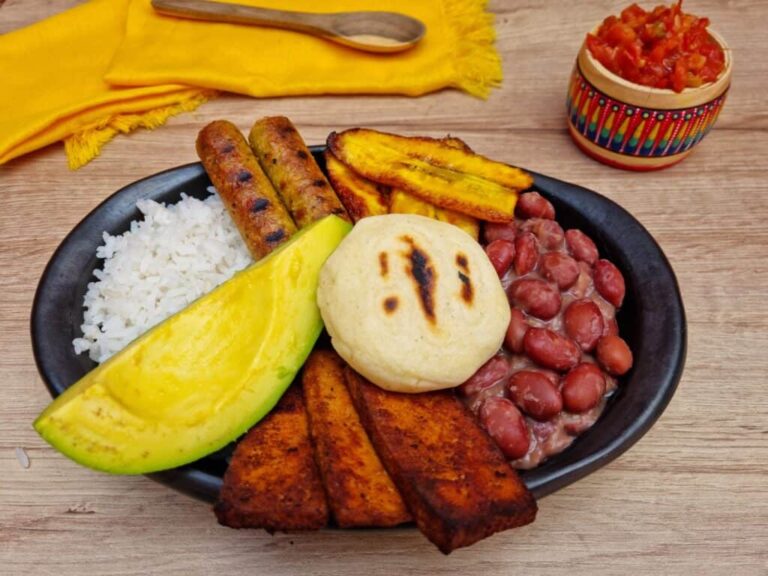Introduction: Understanding Colombian Cuisine
Colombian cuisine is rich, diverse, and incredibly flavorful. It reflects the country’s history, geography, and cultural influences. Colombian food is a mix of indigenous, African, and Spanish culinary traditions, resulting in a unique blend of flavors and textures. Colombia is a country blessed with a wide range of fresh produce and exotic ingredients, which are used to create dishes that are not only delicious but also have a deep cultural significance.
The Diversity of Colombian Foods
Colombian cuisine is incredibly diverse, and it varies depending on the region. The coastal regions are known for their seafood dishes, while the mountainous areas are renowned for their hearty stews and soups. The Andes mountains are also the source of many indigenous ingredients, such as quinoa, potatoes, and corn. Meanwhile, the Amazonian region is home to exotic fruits, vegetables, and herbs that are unique to the area. Colombian cuisine is a reflection of the country’s biodiversity, and it is constantly evolving as more ingredients and cooking techniques are introduced.
The Roots of Colombian Cuisine
Colombian cuisine has its roots in indigenous traditions, dating back over 7,000 years. The indigenous people of Colombia were skilled farmers, hunters, and fishermen who used the abundant resources of the land to create flavorful dishes. They relied heavily on ingredients such as corn, beans, potatoes, and cassava, which are still widely used today. The Spanish colonizers who arrived in the 16th century brought with them new ingredients, such as rice, wheat, and livestock, which were incorporated into the existing culinary traditions.
The Role of Indigenous Ingredients
Indigenous ingredients play a significant role in Colombian cuisine. Many of these ingredients were cultivated and consumed by indigenous people long before the arrival of the Spanish. For example, corn is a staple ingredient in Colombian cuisine, used to make arepas, tamales, and empanadas. Quinoa, a superfood, is also a popular ingredient in Andean cuisine, used in salads, stews, and soups. Other indigenous ingredients such as yucca, plantains, and guava are also widely used in Colombian cuisine.
The Influence of Spanish Colonialism
The Spanish influence on Colombian cuisine is evident in dishes such as bandeja paisa, which is a hearty platter of rice, beans, beef, chorizo, plantains, and avocado. Other Spanish-inspired dishes include changua, a breakfast soup made with milk, scallions, and eggs, and ajiaco, a traditional soup made with chicken, potatoes, corn, and cream. Spanish colonizers also introduced coffee to Colombia, which has become a major part of the country’s economy.
African Influence on Colombian Cuisine
African influence on Colombian cuisine is evident in dishes such as sancocho, a hearty stew made with meat, plantains, cassava, and yucca. African slaves brought with them their culinary traditions and introduced new ingredients such as coconut milk, okra, and palm oil. These ingredients can be found in dishes such as arroz con coco, a rice dish cooked with coconut milk, and carimañolas, deep-fried yucca stuffed with beef.
Modern Colombian Food Culture
Modern Colombian food culture is a mix of traditional and contemporary cuisine. Many chefs have taken traditional dishes and given them a modern twist, using new techniques and ingredients. Fusion cuisine is also becoming popular, with Colombian chefs incorporating flavors and ingredients from other countries. Street food is also an integral part of Colombian food culture, with vendors selling everything from empanadas and arepas to exotic fruits and snacks.
Conclusion: The Importance of Colombian Cuisine
Colombian cuisine is an essential part of the country’s cultural heritage, reflecting its history, geography, and cultural diversity. Colombian food is not only delicious but also has a deep cultural significance. It is a celebration of the country’s biodiversity, and it is constantly evolving as new ingredients and cooking techniques are introduced. Colombian cuisine is a testament to the country’s rich history and is a source of national pride.

